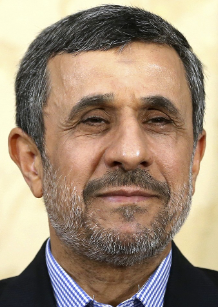October 14, 2022
Syria has ordered Iran to stop launching attacks on Israel from Syrian territory, for fear that will envelop it in war with Israel, so Iran is instead attacking American bases in Syria, prompting the Biden Administration to start pounding bases used by Iran in Syria, The New York Times has reported.
The newspaper quoted Gheis Ghoreishi, an Iranian analyst, as telling it that there was a meeting about a year ago involving the Iranian military and its many allies in the Middle East with the Syriankh7 government to discuss how best to respond to the rising volume of Israeli attacks inside Syria, many of which hit depots where Iran stocked weapons for its fighters in Syria and for the Lebanese Hezbollah.
The Syrians said they did not want attacks against Israel to be launched from their territory so as not to risk an all-out war at a time when the country was already weakened. So, the alliance decided instead to retaliate for the Israeli strikes by hitting American bases in Syria, hoping that Washington would then pressure Israel to back off.
The military experts at the meeting also concluded that although the US military out-powered the proxy groups in Syria and would likely counterattack, the Biden Administration policy was aimed at defusing tensions in the region and it sought to avoid starting any new war at a time when Washington’s attention was shifting away from the Middle East.
The meeting participants decided that for each Israeli strike on an Iranian target in Syria, there would be a retaliatory strike against a US base there, and particularly at Tanf, an isolated base on the Syrian border where it adjoins Jordan and Iraq.
“Iran’s focus on Tanf is because they consider it a troublesome spot for them,” said Omar Abu Layla, executive director of Deir Ezzor 24, a news and analysis organization that focuses on Syria’s eastern province of Deir al-Zour. “They want to expand their military influence on that area entirely,” he told The New York Times.
Last year in October, Iranian proxy forces launched five drones loaded with ball bearings and shrapnel at Tanf. American and Israeli officials at the time said the drone attack was the first time Iran had directed a strike against the US in response to an attack by Israel. Drone and rocket attacks on US bases in Syria have since become rather frequent.
Iran does not claim responsibility for the attacks.
US officials said there are a relatively small number of Pasdar and regular Army officers remaining in Syria, running militias made up of Syrian, Pakistani, Iraqi and Afghan recruits.
The Biden Administration has only occasionally retaliated until late August when it struck with raids on three successive days.
The US strikes began August 23 when fighter jets dropped guided bombs on about a dozen ammunition depots used by militant groups affiliated with the Pasdaran in Deir al-Zour. US officials said they didn’t want to spark a tit-for-tat escalation, so they made sure there were no militants at the depots when they struck to reduce the risk of casualties.
But the next day, a militia overseen by the Pasdaran retaliated by attacking two US outposts in Syria Mission Support Site Conoco in northeast Syria and Green Village, both near Syrian oilfields.
The US military responded with AC-130 gunships and Apache attack helicopters, killing four militants.
“Now we believe, based on the intelligence, that we’ve re-established deterrence,” said Col. Joseph Buccino, a spokesman for the US Central Command. “We believe this back and forth has culminated.”
The Iranian-backed militias are not only striking American sites, which house only about 900 US troops, all that are posted inside Syria. They have also occasionally fired rockets at Turkish military sites inside Iraqi Kurdistan. The most recent such strike was August 25.























